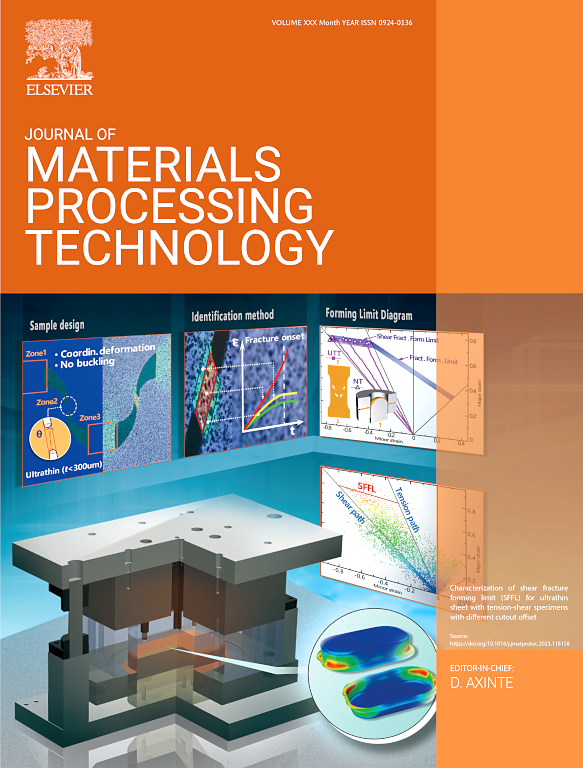Achieving property differentiation and enhanced strength-plasticity in tailor rolled blank of aluminum alloy by variable gauge rolling and heat treatment
IF 6.7
2区 材料科学
Q1 ENGINEERING, INDUSTRIAL
Journal of Materials Processing Technology
Pub Date : 2025-02-01
DOI:10.1016/j.jmatprotec.2024.118698
引用次数: 0
Abstract
This research presents a novel method for preparing tailor rolled blanks of aluminum alloy (Al-TRB) by synergizing variable gauge rolling with heat treatment, achieving a remarkable property differentiation between thin and thick zones and enhanced strength-plasticity. After variable gauge rolling, there is a notable increase in both tensile and yield strengths across the zones, attributed to deformation strengthening, though elongation decreases. The process induces a pronounced property difference, with a tensile strength difference of 72 MPa, a yield strength difference of 100 MPa, and an elongation difference of 12.4 % between thin and thick zones. This property gradient is a fundamental advancement, offering a strategic advantage in automotive component manufacturing by allowing the properties of different parts on the same component to be matched according to their specific operational demands. Subsequent re-aging and bake-hardening treatments further enhance the strength-plasticity, elevating the tensile strengths of the thin and thick zones to 407 MPa and 329 MPa, respectively, while improving elongations to 13.4 % and 20.7 %. The strength increment is attributed to precipitation strengthening, while the elongation increment is due to dislocation recovery during re-aging and bake-hardening. The fundamental advancement of this research lies in the tailored property differentiation of Al-TRB, which not only surpasses the mechanical properties of conventional 6000-series Al-TRB but also provides a strategic advantage in automotive component manufacturing. This innovation enables the maximization of load-carrying potential by matching the properties of different parts on the same component according to specific operational demands, thereby enhancing overall vehicle performance and safety.
求助全文
约1分钟内获得全文
求助全文
来源期刊

Journal of Materials Processing Technology
工程技术-材料科学:综合
CiteScore
12.60
自引率
4.80%
发文量
403
审稿时长
29 days
期刊介绍:
The Journal of Materials Processing Technology covers the processing techniques used in manufacturing components from metals and other materials. The journal aims to publish full research papers of original, significant and rigorous work and so to contribute to increased production efficiency and improved component performance.
Areas of interest to the journal include:
• Casting, forming and machining
• Additive processing and joining technologies
• The evolution of material properties under the specific conditions met in manufacturing processes
• Surface engineering when it relates specifically to a manufacturing process
• Design and behavior of equipment and tools.
 求助内容:
求助内容: 应助结果提醒方式:
应助结果提醒方式:


